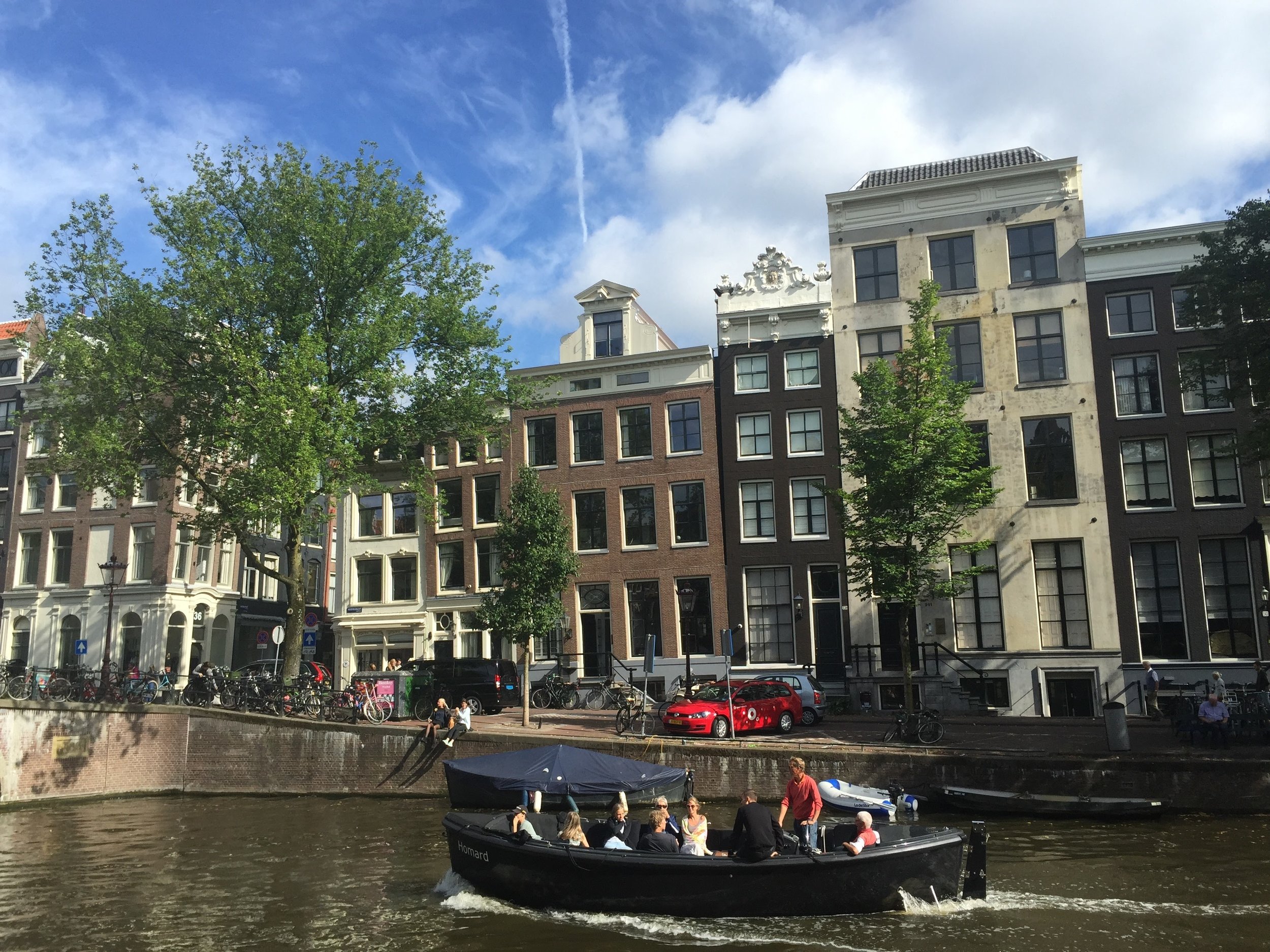Over the last year and a half, I've had the distinct pleasure of calling Amsterdam my home. It is a place that defies any description or platitudes that you may heap upon it, as words inevitably fail to describe the ever-changing nature of this city. But that won't stop me from trying. My observations of the city can be segmented into 5 key areas: the history, diversity, accessibility, tourists, and residents.
History
Perhaps Amsterdam maintains a revered existence due to its storied history. It seems as though every canal house I enter has walls that whisper with ghosts and stories of histories long since forgotten: businesses and families, whores and servants, merchants and tradesmen who called this place their home long before it was infiltrated by weed smoking tourists and expats like me.
Even though the city has expanded and evolved into a modern metropolis, the canals and houses within the ring remain unfriendly to cars and trucks: find yourself wandering a crooked back alley alone late at night and you might end up wondering which century you're in. At some points I find myself wondering why I would even pay entry to one of the city's many museums when the city streets hold just as much intrigue and art.
diversity
These classical appreciations of Amsterdam are just one step towards understanding the city as it exists today. A rich history of influence during the age of exploration forms a stepping stone towards its current diversity. Atop a bicycle you'll find residents speaking of course Dutch and English, but also plenty of Turkish, Spanish, and French. Amsterdam is one of Europe's greatest melting pots, as entire neighborhoods consist of foreigners. Perhaps the old school Amsterdammers don't appreciate this infringement on their lifestyle, but it's just one step in the long and complex evolution of a truly global city.
Yet this diversity moves beyond just languages: Amsterdam holds a diversity of thought that is multi-faceted. From starving artists to hustling entrepreneurs, I've encountered people from all walks of life who love this city and the way it makes them feel, the conversations it inspires, and the cultural quirks it exposes you to.
accessibility
Despite the fact that it's the largest city in the Netherlands and one of the top tourist destinations in the world, the compact center and lack of skyscrapers make Amsterdam feel more like a large village to many outsiders. In just thirty minutes I can cycle anywhere within the city, making any plans or ideas feel accessible.
Even the ears fail to recognize their presence in a metropolis. The whirring of bicycle gears, shouting of children playing in wide, tree-lined streets, and even the rustling of leaves atop trees in the many parks all infiltrate my headphones, belying the fact that I'm in a real city. With a plethora of large and well-maintained parks and the opportunity to escape into a boat and wander the city by water at any time, it's easy to relax and unwind without ever leaving the city.
tourism
For all these superlatives, Amsterdam today is not without its pitfalls. Perhaps the most pressing, and the most interesting for me to observe from my perspective on both sides of the issue, is the overpopulation of tourists. Just a simple walk from the central station to the main shopping area in the city instantly reveals the problem: tourists walk shoulder to shoulder eight wide along the boulevard, meandering amongst bars, coffeeshops excreting with the smell of weed, and tourist information shops. It beckons a simple rule well known to residents: the longer you live in Amsterdam, the farther away you stray from the city center.
Yet as the problem has expanded so too has the tourism industry. Previously purely residential neighborhoods home almost exclusively to the Dutch like De Pijp and Jordaan have become the next breeding grounds for visitors. Even a recent weekend stroll through De Pijp revealed that every popular brunch spot was overflowing with a waiting list, making the area feel like it is bursting at the seams.
Ramifications ripple outwards. Airbnbs abound, driving up the price of rent for locals. Coffeeshops continue to produce impressive revenues selling weed. The locals retaliate, as the best bars and clubs are now firmly placed around the edges of the city and in Amsterdam North in an attempt to avoid the onslaught of tourism. Unfortunately the cycle is unsustainable; eventually, something's got to give.
People
With a steadily growing tech industry which attracts talented employees from all around the world, a flourishing arts and fashion scene and the epicenter of house music holding its roots in Holland, it is increasingly difficult to pinpoint what a real Amsterdammer is. Across cultural boundaries though, one thing remains true: it is a tolerant city.
Drawing inspiration from a history of allowing religious freedom, the city today has more than just freedom to smoke weed and hook up with prostitutes: the people possess a freedom of thought, a belief that what a person is, rather than what a person does, defines an individual.
Ultimately, any description of such a storied city can only hold one perspective of one person from one point in time. I'm eager for the day in the future when I'll return and notice details with a fresh perspective, compare the present with the past, and wonder once again about what the future of Amsterdam holds.




